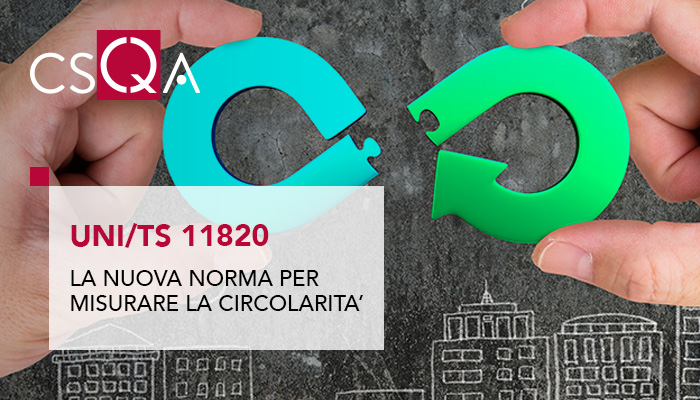
UNI has published the UNI/TS 11820, the standard that will help measure the circularity of an organization or group of organizations.
Its drafting required more than two and a half years, 42 meetings, 122 comments within the preliminary public inquiry, 40 case studies. This is data that helps, albeit only partially, to frame the importance of the technical specification that defines a set of indicators applied at a meso and macro level, with the aim of evaluating, through a rating system, the level of circularity of an organization or a group of organizations.
It is important to specify that the 58-page document provides for a rating system which, without indicating minimum levels of circularity to be achieved, instead guarantees an assessment of the level achieved . In order to respect the "experimental" nature of the standard, which will therefore have time to be assimilated.
Measuring circularity so that it becomes system
With the publication of the technical specification, explained Claudio Perissinotti Bisoni, UNI Technical Project Manager , it will be possible for UNI to start a work of dissemination of the standard, so that circularity can leave the enclosure of the goodwill of the individual realities and become a system, through the definition of a precise series of indicators, supported by some examples of circularity calculation which result in a useful handbook.The UNI/TS 11820 standard is based on a broad perspective of circularity - including complementary approaches such as life cycle thinking , material flow analysis , resource value maintenance and value recovery - and provides for the compilation of 71 total indicators , of which at least 33 indicators for product organizations and 27 for service organizations.
From this, through a series of calculations, a circularity result is obtained, which is returned in the form of a numerical percentage value , therefore useful for certifying the level of circularity of an organization. Once this level has been calculated, each organization can assess the conformity of the level achieved, with respect to the provisions of the technical specification, through an assessment activity which is divided into:
- first part, i.e. a self-assessment by the organization itself
- second part, i.e. an evaluation by the organization's customer
- third part, i.e. an assessment by an independent body , accredited through the UNI standards governing the assertion of circularity. (Source: https://economiacircolare.com/ )